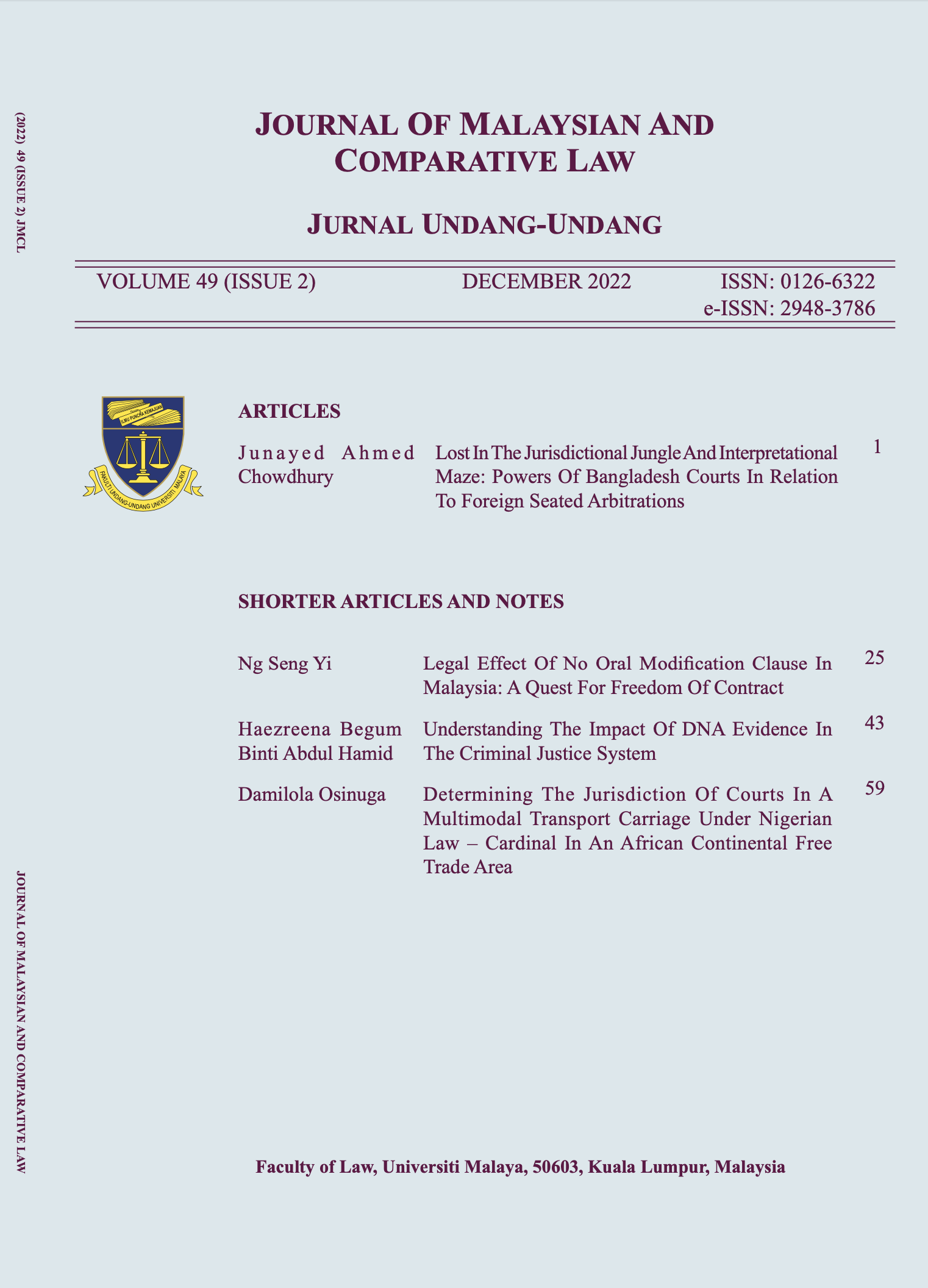UNDERSTANDING THE IMPACT OF DNA EVIDENCE IN THE CRIMINAL JUSTICE SYSTEM
Abstract
The widespread use of deoxyribonucleic acid (‘DNA’) data to detect offenders and exonerate the innocent have been applauded by law enforcers and the judiciary as a breakthrough in the science of criminal investigation. However, the use of DNA evidence in court and methods of collection have raised important legal, medical and ethical questions. Among the questions raised is if the provisions compelling suspects to give DNA samples violate their personal autonomy and privacy rights. Despite this, the Deoxyribonucleic Acid (DNA) Identification Act 2009 (‘DNA Act’) permits law enforcers to collect DNA samples from suspects, detainees, prisoners and drug users. Such practices demonstrate how the DNA Act is able to reconfigure the criminal justice system through methods that are capable of overriding a person’s autonomy and privacy rights. Therefore, this article aims to examine three main areas. First, how the DNA Act provides an avenue for law enforcers to collect DNA through force. Second, how illegally obtained evidence can be admitted in court on the grounds of relevancy. Third, whether the weight and value of DNA evidence is sufficient to prove a case beyond reasonable doubt. The article will conclude by asserting two main points. First, that compelling certain individuals to give their DNA samples infringes a person’s right to privacy and autonomy. Second, that DNA samples can only estimate the probability that the donor is the source of the sample but cannot confirm the person’s participation in a crime. Therefore, this article argues that DNA evidence alone cannot implicate a person beyond reasonable doubt in a criminal trial.



